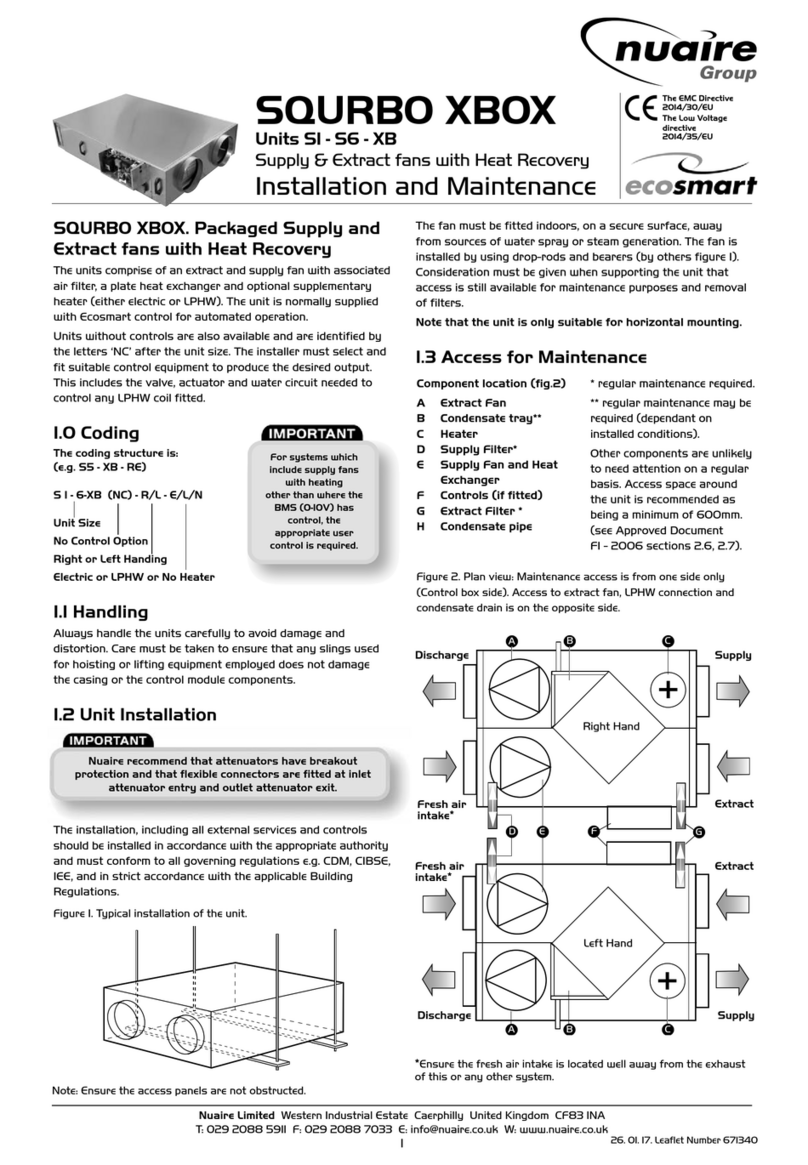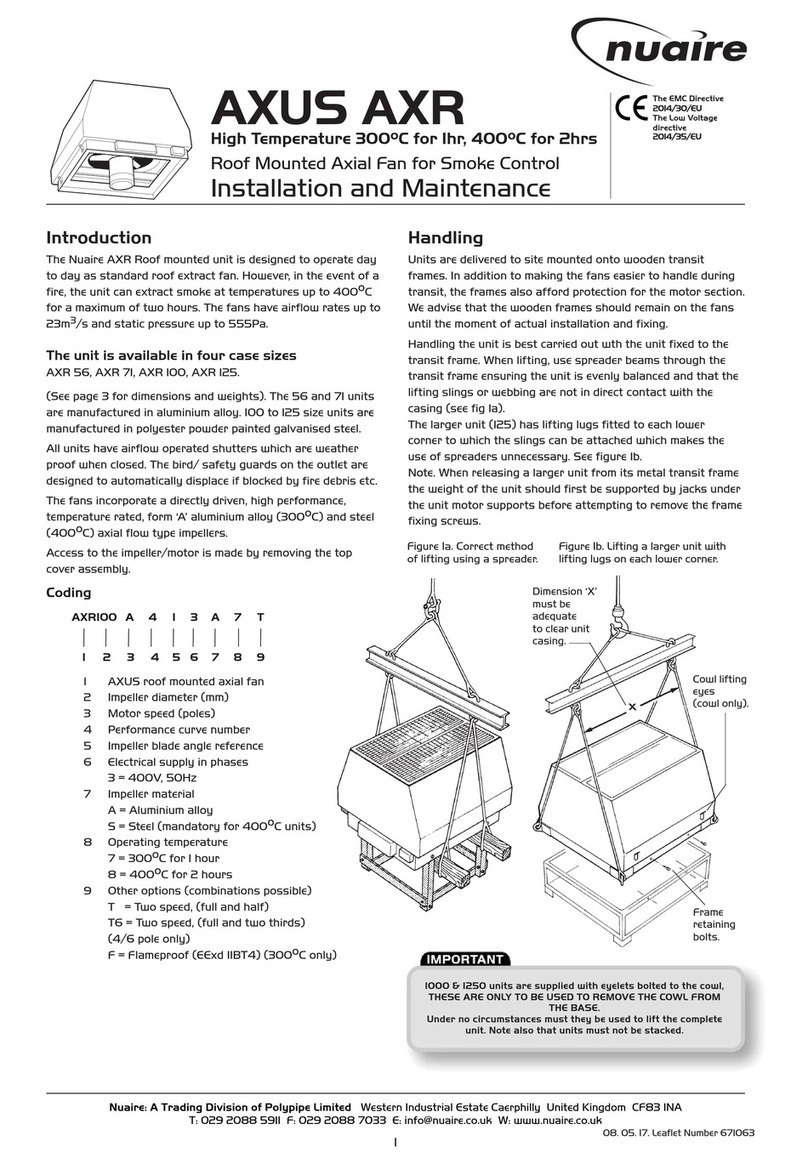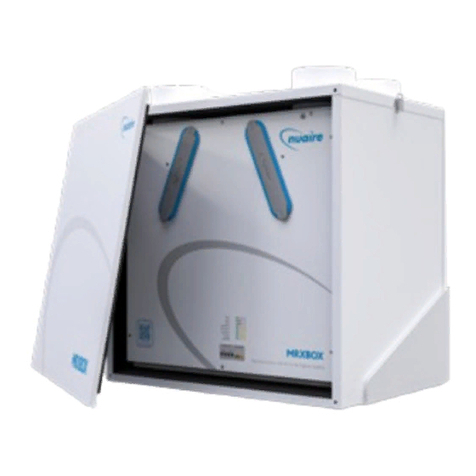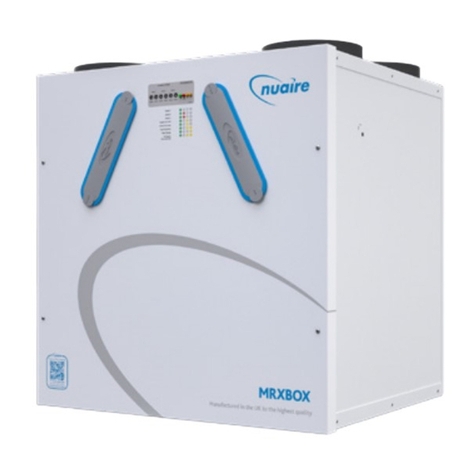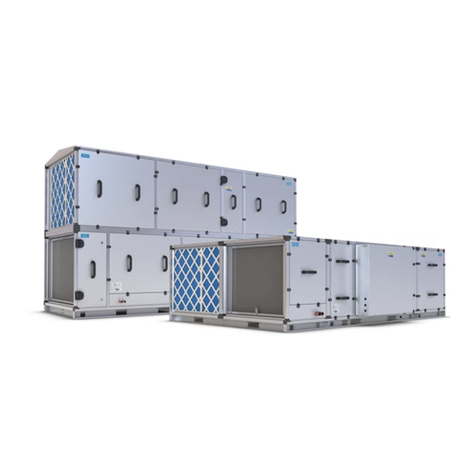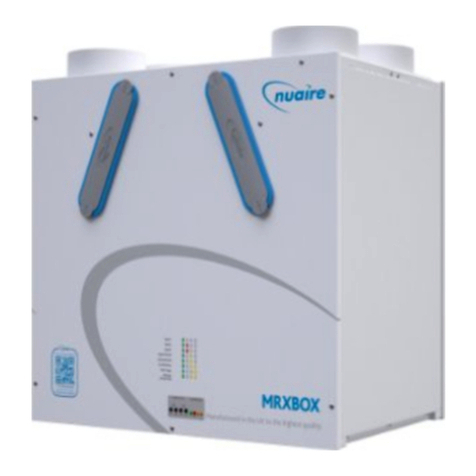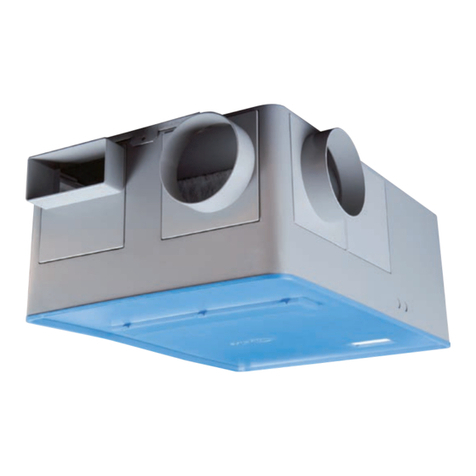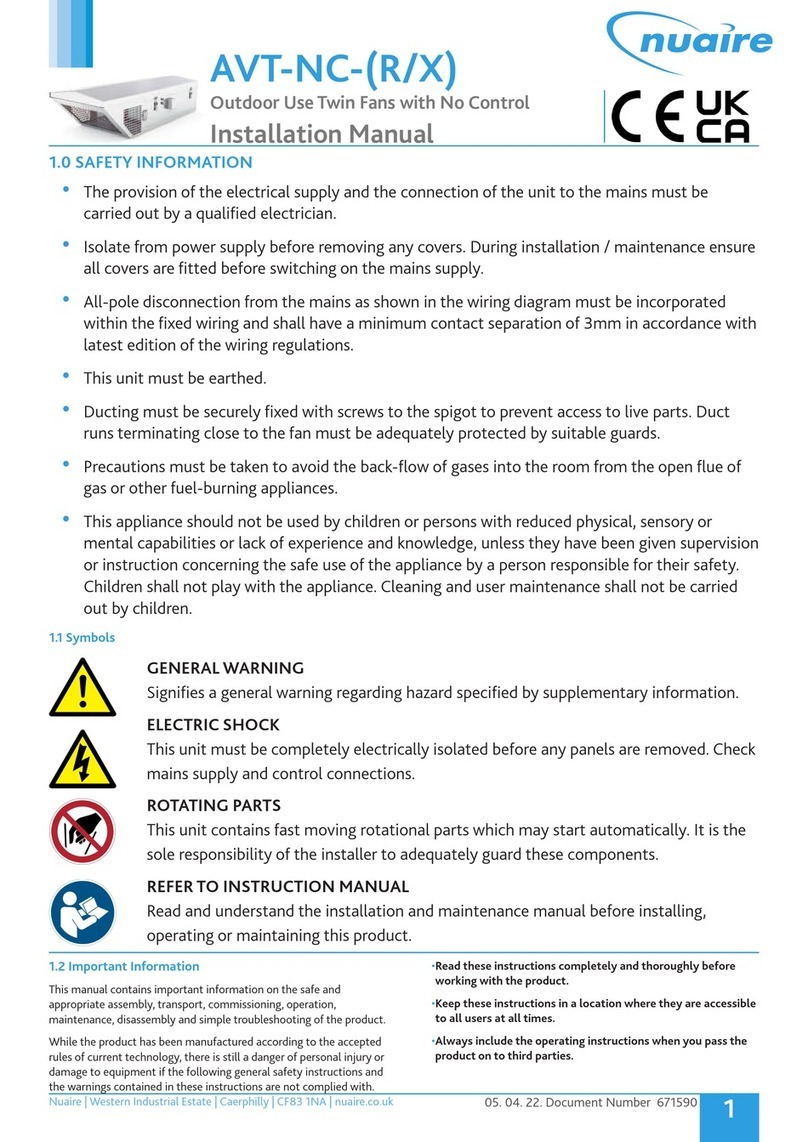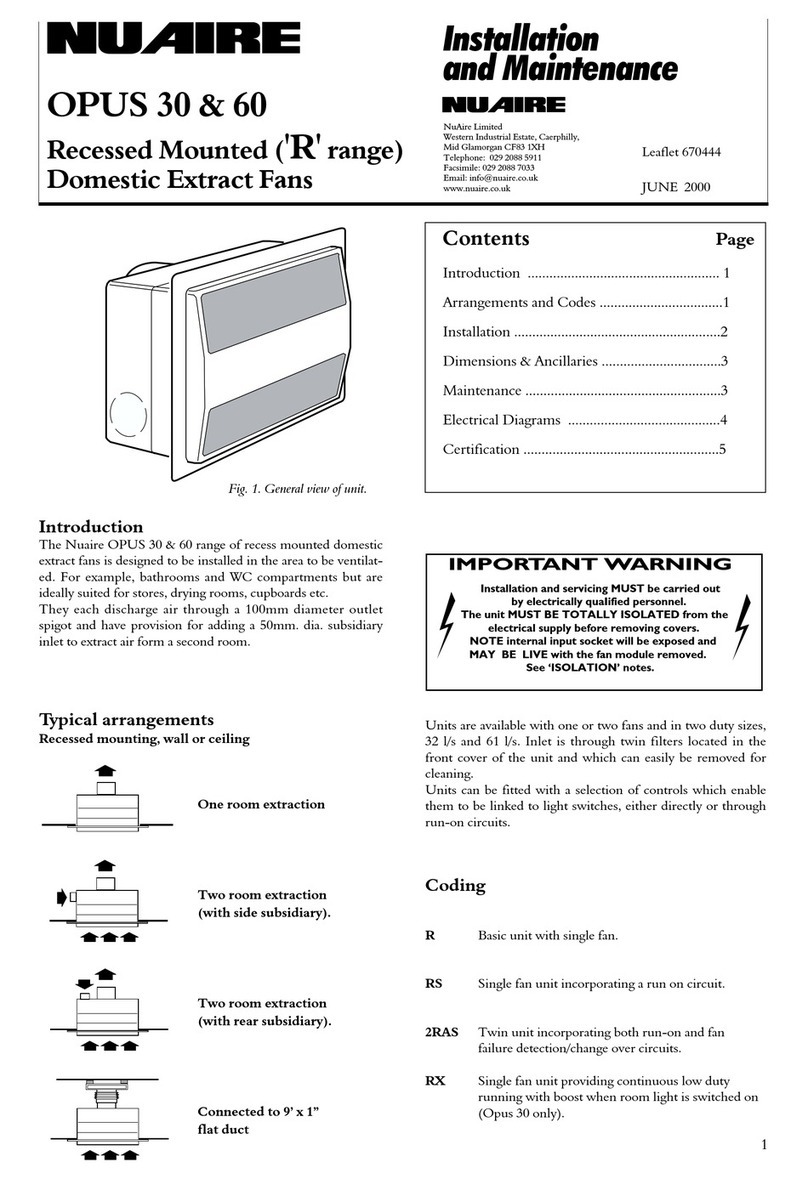
8
Nuaire | Western Industrial Estate | Caerphilly | CF83 1NA | nuaire.co.uk 04. 04. 23. Document Number 672064
AXTÂNInstallation Manual
7.0 COMMISSIONING
Axial fan 300°C for 2 hours - Motors for Smoke Extract Fans
Exposure temperature/time: 300°C for 2 hours
These motors are used to provide a safety function for people
in the event of fire in public premises or in the home. They are
therefore subject to strict constraints concerning their operating
and maintenance.
7.1 Operating Constraints
1. Check on the nameplate that the selected motor corresponds
to the maximum exposure temperature and duration.
2. After the unit has been subjected to one emergency duty
operation it must be replaced.
3. With variable speed control. Ensure that the maximum
speed never exceeds the speed of the motor supplied by
the mains and that the delivered power corresponds to the
previous definitions. The motor should be equipped with
PTC thermistors connected to the protection system during
S1 duty and switched o during S2 duty (operation during an
emergency).
These qualifications ensure the qualification of the driven fan by
the manufacturer.
8.0 MAINTENANCE
8.1 Maintenance Constraints
Regular service visits must be performed on the installation
at least every 6 months, incorporating the following checks:
1. Checking the insulation resistance (R>100 MOhms, 500V DC)
•If the drain holes are blocked, open them to eliminate any
accumulated condensation.
•If R<100 MOhms, dry the stator in an oven and check the
insulation resistance. If the fault persists, replace the stator.
•The stator must be replaced 5 years after installation or after
20,000 hours of operation.
2. Cooling check
•Ensure there is no dust or grease in the entire ventilation
circuit (housing fins, motor cover/fan if fitted driven fan).
•Ensure the motor runs normally when switched on for a few
minutes.
3. Bearing check (C3 or C4 play)
•Run the motor during each maintenance visit. When the
motor is cold, a high level of noise is caused by the texture
of the grease. This does not indicate a bearing fault.
S2 duty only:
The bearings must be replaced by an identical type every 5
years. Ensure the motor runs normally when switched on for a
few minutes.
S1 duty and Emergency in S2 duty:
1. Permanently greased bearings.
300°C / 400°C range; replace on 2 pole motors after 10,000
hours of operation and on motors with 4 poles or more after
20,000 hours.
2. Regreaseable bearings`
The information on the motor nameplates must be strictly
respected (grease quantity, grease quality and re-greasing
frequency). The bearings must be replaced after 20,000 hours of
operation.
8.2 The Run/Standby Axial fan assembly
If the axial unit is disassembled at any time it is critical that it is
reassembled in the correct orientation. Ensure the first stage fan
is positioned in front of the second stage in relation to direction
of airflow. Ensure each fan is rotating in the correct direction of
rotation as per unit label.
8.3 Back draught Damper
The back draught damper is a gravity operated damper
to prevent back draughts to the smoke shaft. These are
manufactured in heavy gauge galvanised steel and are fitted
with a pair of bolted flanges. If disassembled it is important to
reassemble with the doors opening in the direction of airflow.
8.4 Flexible High Temperature Connectors
Circular without flanges, flexible duct material is flame-proof
resistant to heat up to 130°C, chemicals, ozone, oil and grease.
The material is airtight, waterproof and tested to BS476 Part 7.
Secure to flange and ductwork with the clamping bands
provided, ensure that duct misalignment is not corrected by
the flexible connector and that it is neither too tight nor too
slack. Either condition can contribute to noise and impair fan
performance.
8.5 Maintenance Schedule
It is important that maintenance checks are recorded and that the
schedule is always adhered to. In all cases, the previous report should
be referred to. When maintaining a high temperature fan, particular
attention should be given to the Smoke Control Association & Fan
Manufacturers’ Association guide to smoke extract fan maintenance
available at smokecontrol.org.uk.
8.5.1 Routine Maintenance
•Clean all areas of unit of dust or fibres and treat any areas of
corrosion, including lifting lugs / eye bolts.
•Check all areas and ensure no damage is present on units
i.e. impeller cracked, fan cowl bent, foot cracked etc.
•Check all access doors and bolted flange connections for
leakage and if necessary bolts should be adjusted and
any replacement gasket materials should be replaced as
required.
•Check insulation resistance is adequate, it is imperative this
is checked after any prolonged shut down period.
•Check all fasteners and tighten if necessary.
•Ensure no excessive vibration.
As unserviced shaft seals and bearings can create a point of failure due
to lack of use, it is imperative that fans are “run tested” regularly as
part of the overall smoke control system tests, ideally on a weekly basis
during normal operation. A record should be kept of each test, along
with the date and time that it was conducted. The record should be
signed by a competent operative.
8.5.2 Every 3 Months
Check sealing of motor and gland plate is in good condition.

